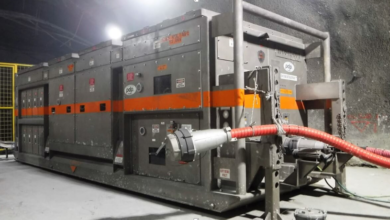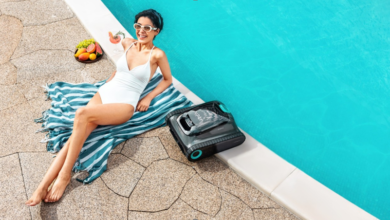Building Weather-Resistant 3D Printed Garden Tools with UV-Stable Filaments

Consumer 3D printers empower hobbyists and small-scale gardeners to create custom garden tools, such as plant markers, watering can nozzles, or trellis supports, that withstand outdoor conditions. Using UV-stable and weather-resistant filaments like PETG or ASA, you can produce durable, functional tools that resist sun exposure, rain, and temperature fluctuations. This guide provides a step-by-step approach to selecting the 3D printer filament, designing weather-resistant parts, optimizing print settings, and applying post-processing techniques to ensure longevity for garden applications.
Why UV-Stable Filaments for Garden Tools?
Garden tools face harsh environmental challenges, including UV radiation, moisture, and temperature swings, which can degrade standard filaments like PLA, causing brittleness or fading. UV-stable filaments, such as PETG and ASA, offer enhanced durability, chemical resistance, and weather tolerance, making them ideal for outdoor use. These materials enable the creation of long-lasting, custom tools tailored to specific gardening needs, from labeling plants to supporting climbing vines.
Step 1: Selecting UV-Stable Filaments
Choosing the right filament is critical for weather-resistant garden tools. Common options include:
- PETG: Combines durability, flexibility, and moderate UV resistance. It withstands moisture and temperatures up to 80–100°C, making it suitable for plant markers or watering nozzles. Prints at 230–250°C with a heated bed at 60–80°C.
- ASA: Offers superior UV resistance and toughness compared to ABS, withstanding prolonged sun exposure without yellowing. Ideal for trellis supports or outdoor fixtures. Prints at 240–260°C with a heated bed at 90–110°C.
Consider the tool’s function: PETG is excellent for flexible or semi-rigid parts like hose adapters, while ASA suits rigid, high-exposure components like trellis brackets. Check the filament’s datasheet for UV stability, water resistance, and temperature tolerance. Opt for darker or opaque colors, as they often resist fading better than light or translucent shades.
See also: TTI Net Worth: How Much Is the Technology Company Worth?
Step 2: Designing Weather-Resistant Garden Tools
Design tools with outdoor durability and functionality in mind using CAD software like Tinkercad, FreeCAD, or Fusion 360:
- Plant Markers: Create flat or stake-style markers with embossed or debossed text (e.g., plant names) at least 0.5 mm deep for readability. Design stakes 5–10 cm long for secure ground insertion.
- Watering Can Nozzles: Design with 0.5–1 mm holes for water flow and threaded or snap-fit connections to fit standard cans. Ensure walls are 1–2 mm thick for durability.
- Trellis Supports: Design modular brackets or clips with interlocking features to support climbing plants. Add fillets or ribs to reinforce stress points.
- Weather Considerations: Use thick walls (1.5–2 mm) and rounded edges to reduce stress and resist cracking. Design parts to be water-tight by minimizing seams or using solid infill for critical areas.
- Tolerances: Include 0.2–0.4 mm clearances for press-fit or snap-fit components, accounting for slight shrinkage in PETG or ASA.
Test designs with a small prototype, like a single plant marker or nozzle segment, to verify fit and durability before printing the full tool.
Step 3: Optimizing Print Settings
UV-stable filaments require specific slicer settings to ensure water-tight, durable prints. Start with these baselines and adjust based on test prints:
- Temperature: Set the nozzle to 230–250°C for PETG or 240–260°C for ASA. Test in 5°C increments to achieve smooth extrusion without stringing.
- Print Speed: Use 30–50 mm/s for PETG to ensure good layer adhesion. Reduce to 20–40 mm/s for ASA to prevent warping due to higher temperatures.
- Layer Height: Choose 0.2–0.3 mm for most garden tools to balance strength and print time. Use 0.1–0.2 mm for detailed parts like nozzle holes or embossed text.
- Infill: Set 20–40% infill with gyroid or cubic patterns for strength and water resistance. For water-tight parts like nozzles, use 100% infill or 3–4 walls (1.2–1.6 mm) to prevent leaks.
- Retraction: Use 1–2 mm (direct-drive) or 2–4 mm (Bowden) at 20–30 mm/s to minimize stringing. Enable “wipe” or “coasting” to reduce oozing.
- Cooling: Use 20–40% fan speed for PETG to balance detail and adhesion. For ASA, disable cooling or use 10–20% to prevent layer separation in high-temperature prints.
- Bed Adhesion: Set the bed to 60–80°C for PETG or 90–110°C for ASA. Apply a glue stick or painter’s tape and use a 5–10 mm brim to prevent warping.
Print a test part, like a small plant marker, and submerge it in water for 24 hours to check for leaks or degradation. Adjust settings if needed.
Step 4: Printing and Testing Garden Tools
Print with care to ensure quality and weather resistance:
- Prepare the Printer: Use an all-metal hotend for ASA, as high temperatures can degrade PTFE-lined hotends. For PETG, a standard hotend is sufficient. Ensure the bed is level to prevent lifting.
- Dry Filament: Dry PETG or ASA in a dehydrator at 50–60°C for 4–6 hours before printing, as both are hygroscopic and prone to moisture-related defects like bubbling.
- Monitor Printing: Watch the first layer to confirm adhesion and flow. For ASA, use an enclosed printer or DIY enclosure to stabilize temperatures and reduce warping.
- Test Durability: After printing, test tools in outdoor conditions. For example, insert plant markers into soil, expose them to water, and leave them in sunlight for a week to verify UV and weather resistance.
If a part fails (e.g., cracks or fades), increase wall thickness, adjust infill, or switch to ASA for better UV stability.
Step 5: Post-Processing for Enhanced Longevity
Post-processing improves weather resistance and aesthetics:
- Sanding: Smooth layer lines with 800–1200 grit sandpaper to enhance appearance, especially for visible parts like plant markers. Wet-sand to reduce dust.
- UV-Protective Coating: Apply a UV-resistant clear coat (e.g., polyurethane spray) to protect against sun damage. Use 1–2 thin coats to avoid adding weight.
- Sealing: For water-tight parts like nozzles, apply a thin layer of silicone sealant to seams or holes to prevent leaks.
- Outdoor Testing: Place post-processed parts in the garden for 1–2 weeks to confirm they withstand UV, rain, and temperature changes.
Practical Tips for Success
- Start with PETG: PETG is easier to print than ASA, making it ideal for beginners creating outdoor tools.
- Use an Enclosure for ASA: Prevent warping by maintaining stable temperatures with an enclosed printer or DIY enclosure.
- Test Water Resistance: Submerge parts like nozzles in water to ensure they’re leak-proof before use.
- Log Settings: Save successful slicer profiles for each filament to streamline future prints.
- Simulate Outdoor Conditions: Test parts under a UV lamp or in a wet environment to mimic garden conditions before deployment.
Benefits for Gardening
Weather-resistant 3D printed garden tools offer customization and durability, saving money compared to store-bought alternatives (e.g., $5–$20 per tool). A 1 kg spool of PETG or ASA ($25–$40) can yield dozens of plant markers or multiple nozzles, tailored to specific garden layouts. These tools enhance functionality, such as precise watering or organized plant labeling, improving gardening efficiency.
Challenges and Solutions
High-temperature filaments like ASA can warp if not printed in an enclosed environment; use an enclosure and high bed temperatures to mitigate this. PETG may string if retraction isn’t optimized; adjust retraction settings and test with a small model. UV degradation can still occur over time; apply UV coatings and monitor parts annually, reprinting if needed.
Conclusion
Building weather-resistant 3D printed garden tools with UV-stable filaments like PETG or ASA enables gardeners to create durable, custom solutions for outdoor use. By selecting appropriate filaments, designing for weather resistance, optimizing print settings, and applying protective post-processing, you can produce tools that withstand sun, rain, and temperature changes. Start with small test prints, refine your process, and test parts in real garden conditions. With these techniques, your consumer 3D printer becomes a versatile tool for crafting practical, long-lasting garden accessories.




